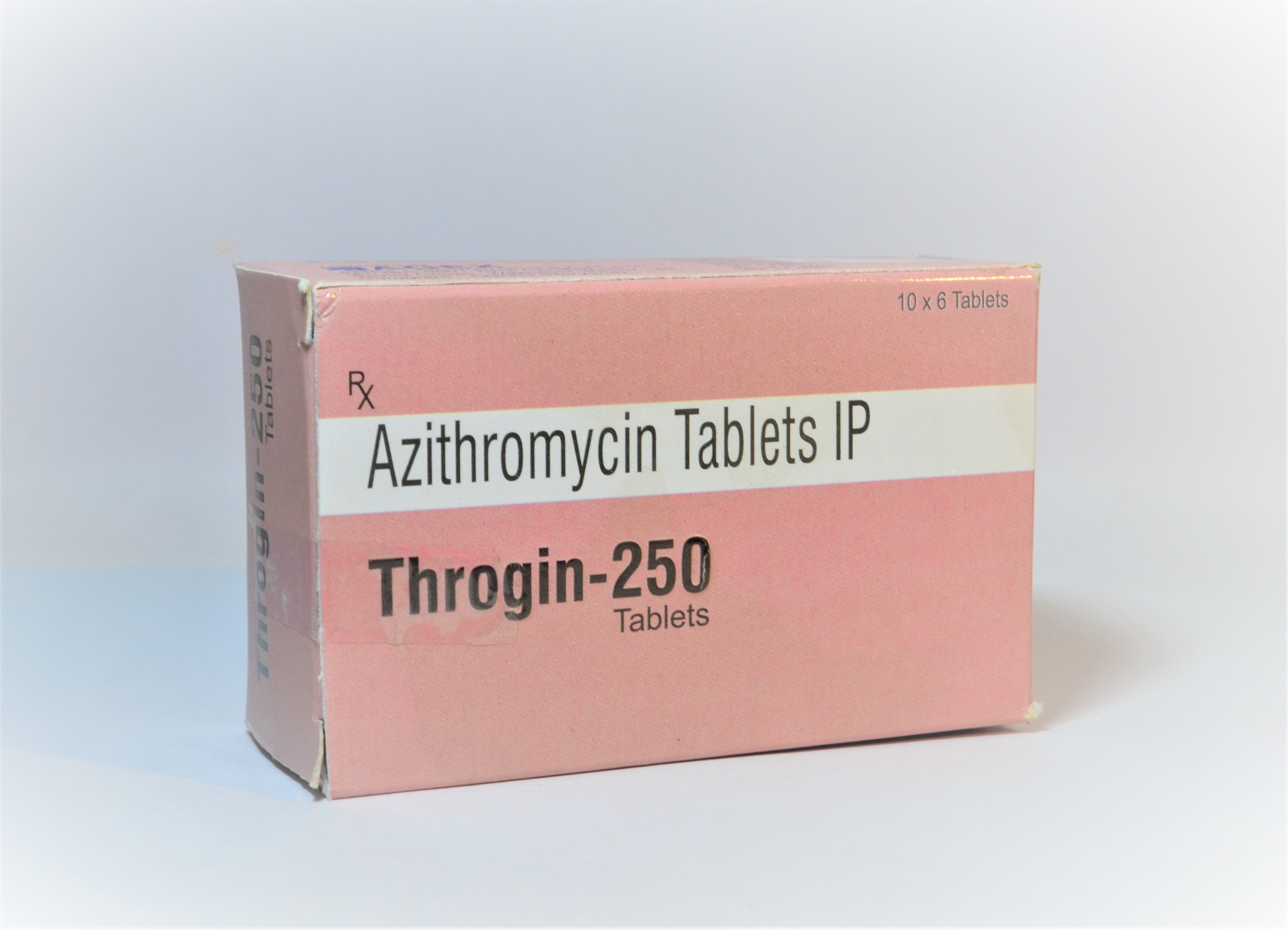
MRP : 71
Indications & Usage
Throgin-250 (Azithromycin) is used to treat a variety of bacterial infections, such as:
• Cat-scratch disease, ear infections, infections of the skin or surrounding tissue, and throat or tonsil infections.
• Lung and other respiratory infections, such as bronchitis, sinusitis, community acquired pneumonia.
• Some cases of chronic obstructive pulmonary disease (COPD) and whooping cough (pertussis).
• Genital infections & sexually transmitted diseases: such as gonorrhea, infections of the urethra or cervix, genital ulcers, and severe pelvic inflammatory disease.
Contraindications
Throgin (Azithromycin) is contraindicated in patients with known hypersensitivity to azithromycin, erythromycin, any macrolide, or ketolide drug. Throgin is contraindicated in patients with a history of cholestatic jaundice/hepatic dysfunction associated with prior use of azithromycin.
Precautions & Warnings
Serious allergic reactions, including angioedema, anaphylaxis, and dermatologic reactions including Stevens-Johnson Syndrome, and toxic epidermal necrolysis, have been reported rarely in patients on azithromycin therapy. Cases of Drug Reaction with Eosinophilia and Systemic Symptoms (DRESS) have also been reported. Despite initially successful symptomatic treatment of the allergic symptoms, when symptomatic therapy was discontinued, the allergic symptoms recurred soon thereafter in some patients without further azithromycin exposure. These patients required prolonged periods of observation and symptomatic treatment. The relationship of these episodes to the long tissue half-life of azithromycin and subsequent prolonged exposure to antigen is presently unknown.
Abnormal liver function, hepatitis, cholestatic jaundice, hepatic necrosis, and hepatic failure have been reported, some of which have resulted in death. Discontinue azithromycin immediately if signs and symptoms of hepatitis occur.
Exacerbations of symptoms of myasthenia gravis and new onset of myasthenic syndrome have been reported in patients receiving azitrhromycin therapy.
Administration & Dosage
Azithromycin may be taken with or without food. The dosage and length of time for azithromycin treatment vary according to the type of infection:
Infections of the skin and skin tissues: One dose of 500 milligrams (mg), then 250 mg per day for four days.
Infection of the throat and tonsils: One dose of 500 mg; then 250 mg per day for four days
Community Acquired Pneumonia (CAP): One dose of 500 mg, then 250 mg per day for four days.
Genital Ulcer Disease: 1 gram (g), one time.
Sinus infections caused by bacteria: 500 mg a day for three days or 2 g as a one-time dose
Presentation
Throgin-250: Strip of 6s